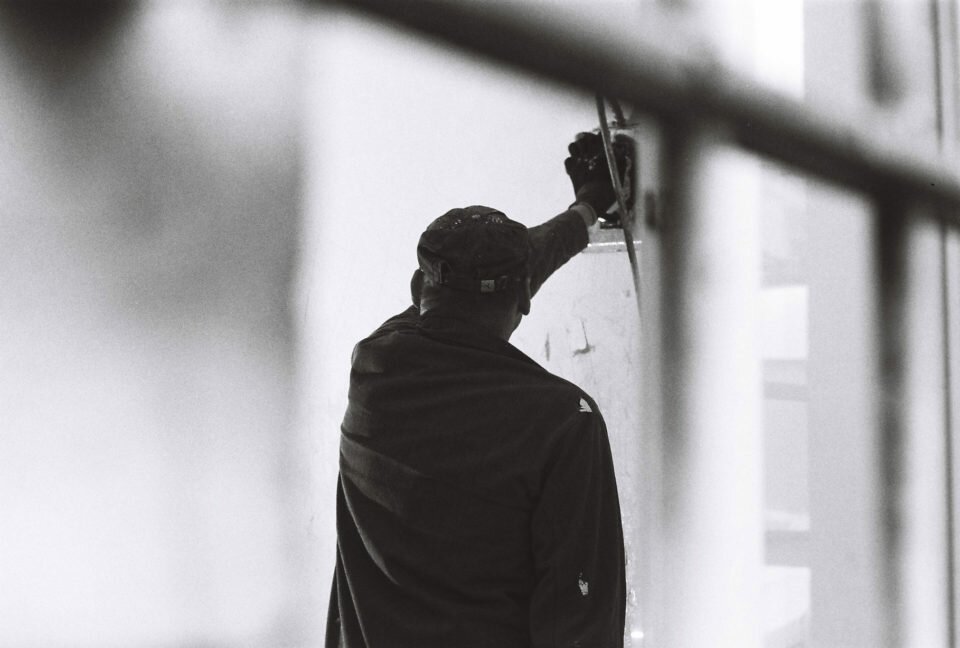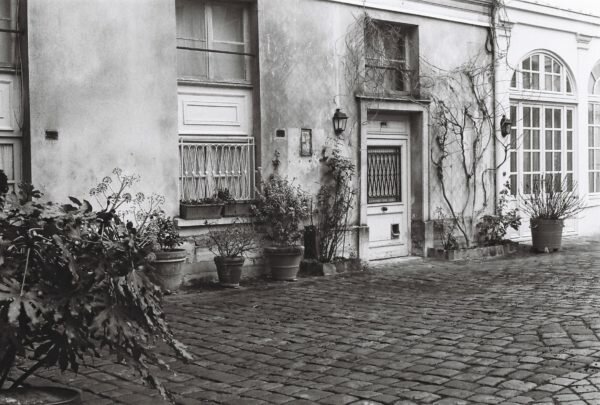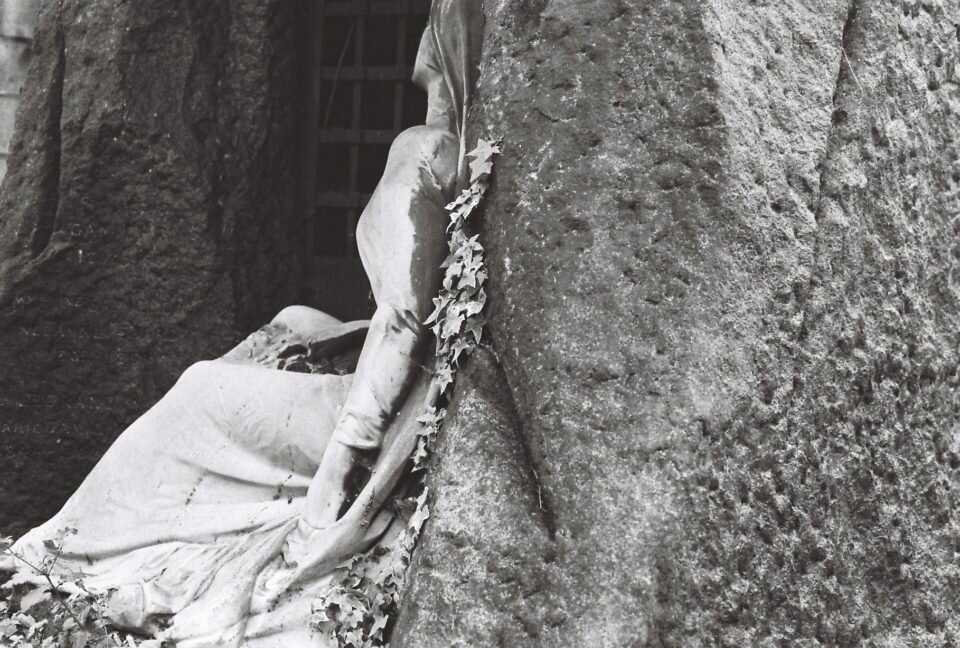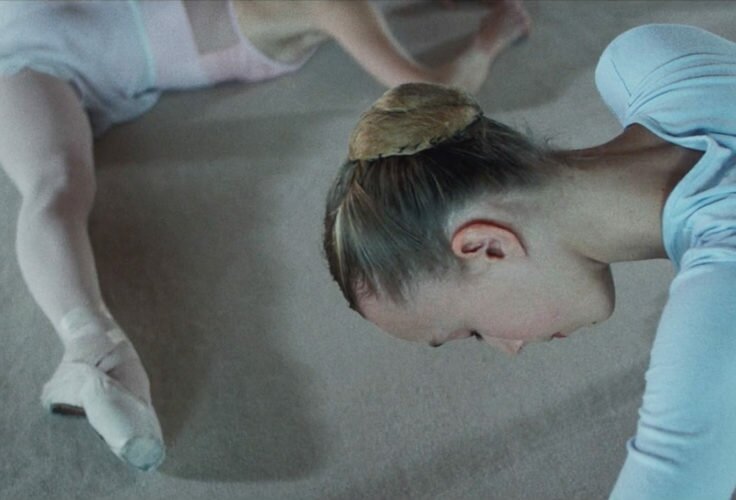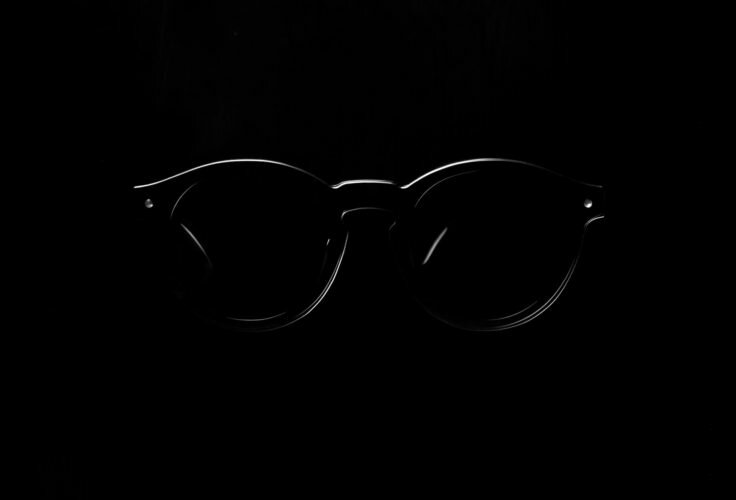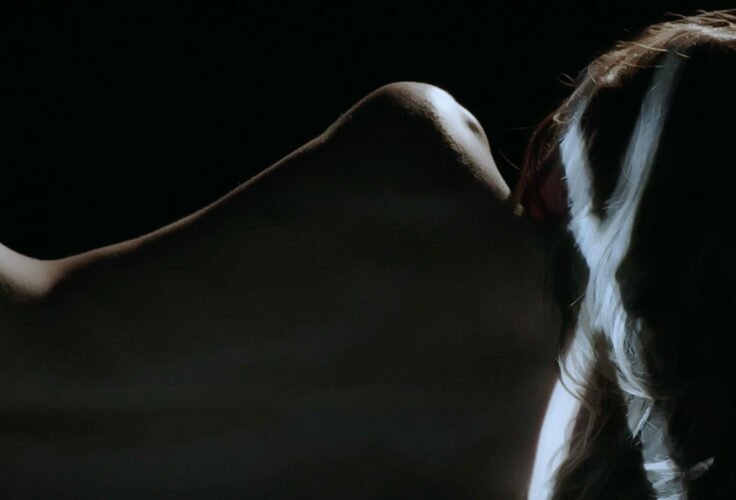Every day for seven days, Anna Senno walks between her home and the laboratory to develop one roll of photographs. 7 Days is a performance project reuniting photography and storytelling.
by Anna Senno
Paris, January 2017
A performance project
joining photography
and storytelling
Day 1
7 days,
Aurora
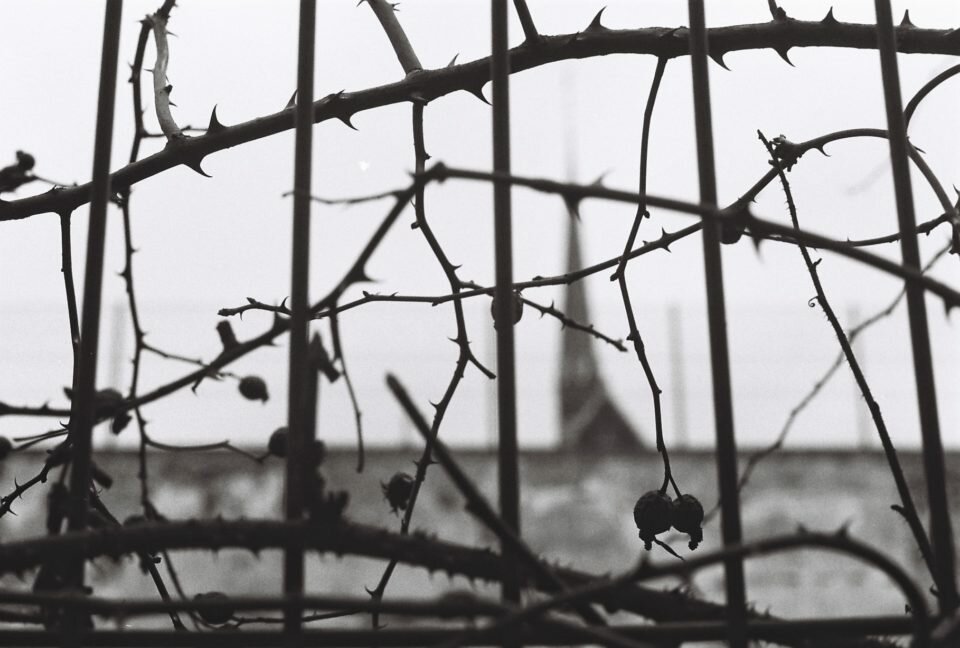
Every day for seven days, Anna Senno walks between her home and the laboratory to develop one roll of photographs taken that day.
24 frames – she singles out 1-5, which become the basis for her storytelling. Fiction intertwined with reality: a fixed framework with no pre-established content. One roll and one story per day, for seven days, in pictures and words.
Camera: Canon FT QL – 1966-1972, 50mm 1:1.8
Film: Ilford B&W, 400 HP5
Laboratory: Processus, Paris
7 DAYS © Anna Senno. All images and text © 2017, Anna Senno. All rights reserved. No part of this publication may be reproduced or used without prior written permission from the copyright holders.
In the late 14th century, a French merchant from the city of Pau brought great fame to his region through his inventive storytelling. One of his stories became one of the most famous fairytales ever known to the world.
Marbaule Arthur was born in Orléans but brought up by two sisters named Mathilde and Eleanor in the heart of the city of Pau. The sisters had been given the task to raise young Marbaule to grow up into becoming knowledgeable about human psychology and to understand the art of empathy. This was, at the time, a task not without its dangers, as this enlightened approach to education could awaken the angry eye of the clergy, reigning fearlessly over the region. The boy, son to the famous eastern explorer Arthur Le Minoristie, was left in the hands of the two sisters since his father doubted the maternal qualities of his wife. To raise the boy himself would have been impossible for Arthur due to his passion for discovery. A child would almost certainly not survive the challenges of traveling alongside him.
Marbaule grew up with exceptional education and care. He was given all that his father had requested and beyond. The origin of his father’s request had arisen during one of his travels. In the Far East, Le Minoristie had spent months in the company of the Yuiouin clan. The clan was a branch of Buddhism and exercised a philosophy very different to the Catholic one practised where Le Minoristie came from. There he sensed for the first and only time in his life a brief moment of happiness. When Marbaule was born, his father had felt a similar emotional state as with the Yuiouin and therefore decided that if he could plant a seed of happiness for his son he should do so. The father soon divorced his wife after leaving the child to the care of the sisters in Pau. His wife would later become the unknown inspiration for the famous Mergherita Manccini, known as Sainte Rita, when she joined a convent despite not being a virgin. This is a side story, but still worth mentioning I think.
How Monsieur Le Minoristie came to meet the two sisters remains unknown. But under their care, Marbaule grew up to become a handsome and social man. Thanks to the task given by his father, Marbaule stood outside of any social class system and could navigate between classes thanks to his wit and generosity – he became a successful merchant and supported the lives of his ageing surrogate mothers. His true happiness, though, came through telling stories to the stray children of the streets of Pau. His stories were invented by tapping into his many encounters as a merchant. He became an excellent storyteller, in large part due to the empathetic skills he’d been taught. One of his favourite stories to tell was the one he named Frayre de Joy et Sor de Placer. It was a story that evoked eroticism, eternal love and magic mystery. Perhaps not too suitable for children, but he would always claim that his made-up stories came from somewhere, maybe as proof of their authenticity or perhaps so as not to be taken for a fool. This specific story, still told today, would be subscribed to an old Occitan village, for instance.
A young man hears about the exceptional beauty of the seemingly dead daughter to the Emperor of Gint-Senay. Her name, Sor de Placer, means Sister of Pleasure. The young man, known as Frayre de Joy, is the prince of Florianda. Stubborn and curious, he is compelled to visit her, and in his journey he falls deeper and deeper in love with the lifeless beauty. The Emperor can’t bring himself to bury his daughter, as her body is still warm. He therefore places the body into one of the towers of the castle. Upon his arrival, Frayre de Joy manages to enter the tower, unseen to anyone thanks to the magic of Virgil, a magician he’s known for a while. He enters the tower room, puts a ring on her finger and another on his own, then undresses the beauty and makes love to her. Finally he reaches down for a kiss. Virgil the Magician sends a bird of exceptional prolix tongue to the tower window at that very moment. As the bird speaks the most beautiful language Frayre de Joy has ever heard, a spell is cast into the room. The spell miraculously awakens the beauty. Sor de Placer resurrects not only to discover she is no longer a virgin, but also that she’s expecting the illegitimate child of the young prince. Terrified, she seeks comfort in her father. The father, an ageing emperor, persuades his daughter to take the prince as her husband. The progeny is secured and a wedding of utmost extravagance is held the following month in the presence of kings and emperors, as well as the Pope himself. The child is born months later without any complications and is given the name Joy de Placer.
As Marbaule grows older, his storytelling skills become a much-celebrated feature in the region. All passers-by desire to hear a story from the now very fortunate merchant. It is even said that listening to a story in his very presence brings good luck to travellers. This is how, years later, a collective of four French writers come to know about Marbaule. The four head to Pau and sit down in his presence to listen to the by this time already famous story of Frayre de Joy et Sor de Placer. The collective, however, is not after the good luck the story is supposed to bring, but rather to copy it. Indeed, the four are about to publish a novel with 531 chapters entitled Perceforest. Marbaule’s story – slightly modified – later turns out to be used by Charles Perrault in 1697 and by the Grimm Brothers in 1812. The most widespread version of the story told by our storytelling hero Marbaule in Pau is probably however the one popularised by Walt Disney. Frayre de Joy et Sor de Placer is indeed the predecessor of the tale we all know as The Sleeping Beauty. When Tchaikovsky interpreted it using Perrault’s version he gave the name Aurora to Sor de Placer, and so did Walt Disney.
As a child I listened, with a fright, to a recorded tape of Sleeping Beauty. It was one of these books that came with a cassette, where a signal would tell you when to turn the page. When the signal came to turn the page to where the wicked witch is crying out “Aurora, Aauuroooooraaa” I felt a chill running down my spine, sometimes I even fast-forwarded the tape not to hear the haunting voice. I can still not dissociate the fear in my body from the name and hope I’ll never have a friend named Aurora. One late evening as I sat on the porch of the beautiful Auberge in Chassignole, Auvergne, and suddenly heard the name Aurora mentioned several times, I fearfully leaned in to hear more. Many bottles of red gold had been emptied; we were about ten people. Discussions were overlapping and I was moving in and out of the surrounding conversations. But I clearly remember every piece of description that was given to this story. The man revealed all of what I have told you so far about Marbaule and his now world famous story. The man that I just previously thought of as quite self-important became my greatest subject of interest. I asked him to continue telling us more. He reluctantly responded to my wish, as if he just caught himself saying too much.
Marbaule Arthur left a well-documented legacy behind him: books, diaries, written novels, short stories, and sheets with scribbles of fairytales. His legacy remained undiscovered however, until 2014, when his family home was about to be sold. Passed down from generation to generation, the few descendants left were no longer capable of maintaining the property. Living in Paris, the family decided to sell the estate in 2014, and this is when the story of Marbaule was unveiled.
I asked if I could meet with the family in Paris, the man said he’d ask. I went to bed. In the morning the man had left already. I got his name from Mr. Taylor as well as his e-mail, he had no phone number to give me. Since 2015 I have been trying to get in touch with the family in Paris. Back there I tried to track down more information about the story but had no luck trying to meet with the family. I have had numerous mysterious encounters and locations for rendezvous, only to get another tiny glimpse of the whole affair. If I am writing this today, it is because I now have enough light to share on what will become one of the greatest showdowns in history. Forget about when the little mermaid (the statue in Copenhagen) got beheaded in 1964. I need to tell the story now, because when it all gets official, so many stories will start to circulate out there. The only way of assuring you that you’d be given the right version is to be the first one to let you know.
On March 23rd, the lawsuit filed by the Arthur Family to reclaim royalties to every Sleeping Beauty ever published or produced will be made official. This lawsuit will be the most comprehensive and extensive ever tried, not only in modern history.
